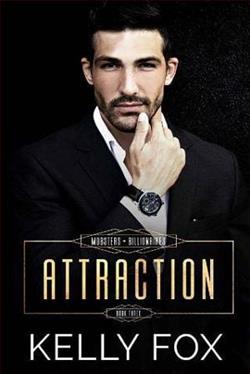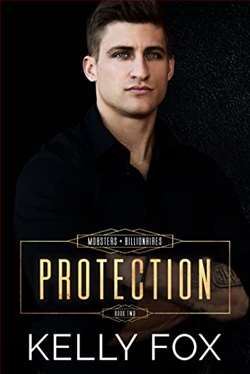Page 71 of The Last Days of Marilyn Monroe
Greenson’s initial assessment of Marilyn is that she suffers from symptoms of paranoia and schizophrenia.
“As she becomes more anxious,” he writes, “she begins to act like an orphan, a waif, and she masochistically provokespeople to mistreat her and to take advantage of her. As fragments of her past history came out, she began to talk more about the traumatic experience of an orphan child.”
Marilyn asks Greenson to return. To her friend Norman Rosten, she describes the doctor as “Jesus—My savior.”
“Jesus—How so?” Rosten asks.
“He listens to me.”
Sensing that Marilyn is prepared to test the boundaries of doctor and patient, Greenson warns that he will not “help her kill herself, or spite her husband.”
Miller, he feels, has “the attitude of a father who had done more than most fathers would do and is rapidly coming to the end of his rope.”
Most astonishing to Greenson is Marilyn’s tolerance for drugs. “Although she resembled an addict,” the doctor observes, “she did not seem to be the usual addict, she seemed to be able to give up the drugs without heavy withdrawal symptoms.”
He enlists internist Dr. Hyman Engelberg in his quest to limit her drug usage. Part of the challenge is Marilyn’s ongoing obsession with sleep. One afternoon, she begs him for an Amytal intravenous drip, despite having slept some fourteen hours the night before.
Amytal sodium is a powerful barbiturate used as a preanesthetic before surgery.
Greenson tells Marilyn that she’s “already received so much medication that it would put five other people to sleep.” Sleeping with less medication is possible, he promises, “if she would recognize she is fighting sleep as well as searching for some oblivion which is not sleep.”
CHAPTER 48
FOX HAS ALLOTTED ten weeks for rehearsal before shooting ofLet’s Make Lovebegins on Sound Stage 11.
The plot centers on billionaire Jean-Marc Clément somehow landing an unlikely off-Broadway role playing himself in a musical about his own life. Clement uses his wealth to hire Bing Crosby, Gene Kelly, and Milton Berle—all making cameos as themselves—to polish his singing and dancing enough to impress Marilyn’s character, Amanda Dell, a performer who prefers talent to wealth.
In real life, Marilyn is also polishing her skills in a dance studio with Jack Cole, the exacting choreographer who directed the song-and-dance numbers inGentlemen Prefer Blondes.
After they’ve worked together on six pictures, most recentlySome Like It Hot,Cole’s cues are familiar to Marilyn.
“No, wait. Sharp, I want it sharp!” Cole demands.
“But Jack, I’m supposed to be a sex queen,” Marilyn says.
“That’s not sexy. That’s like a limp fish. Put that arm out there, strong! That’s sexy! That’s life, that’s alive, that’s energy!”
Marilyn is not a natural dancer, but Cole maximizes her abilities by teaching her to make small gestures with her head or her hip, trusting her to connect with her instinctual sensuality—and sexuality.
They’ve become good friends, but Marilyn hasn’t been acting like one during this shoot. She’s been late to set, distracted, distant. There’s much to rehearse, especially on the Cole Porter number “My Heart Belongs to Daddy,” where Marilyn will dance among an ensemble in an elaborately choreographed piece Jack Cole envisions rivaling the “Diamonds Are a Girl’s Best Friend” number he created forGentlemen Prefer Blondes.
Cukor shares the same frustrations most directors have with Marilyn, but he has more sympathy. “I knew that she was reckless. I knew that she was willful. She was very sweet, but I had no real communication with her at all,” he says. “You couldn’t get at her … As a director I really had very little influence on her. All I could do was make a climate that was agreeable for her. Every day was an agony of struggle for her, just to get there.”
Despite her film-star status, Marilyn still has an odd phobia of the camera—and an inability to remember her lines—but somehow, none of that matters. “She’d do three lines and then forget everything again. You had to shoot it piecemeal. But curiously enough, when you strung everything together, it was complete.”
For the duration of the shoot, the studio has booked the costars and their spouses into bungalows 20 and 21 at the Beverly Hills Hotel. Yves Montand’s wife, Simone Signoret, is amused by Marilyn, who looks like “the most beautiful peasant girl imaginable from the Île-de-France.”
Montand is learning English phonetically from the script, but it’s a challenge. To spare him the stress of potentially embarrassing himself in front of director George Cukor and the crew, Marilyn suggests that they work on their lines together at the hotel.
Miller is no fan of the script, but he has agreed to do some script doctoring, “to try to save her from a complete catastrophe.” Though his marriage to Marilyn is under severe strain, he wants to be a devoted spouse, “giving her the kind of emotional support that would convince her that she was no longer alone in the world—the heart of the problem, I assumed.”
But helping with the script doesn’t have the effect Miller hoped, leaving him feeling unappreciated. “It was a bad miscalculation, bringing us no closer to each other.”
Hollywood awards season opens with the Golden Globe Awards, held at the Cocoanut Grove in the Ambassador Hotel on March 10, 1960.Some Like It Hotwins Best Picture–Comedy, Jack Lemmon wins Best Actor in a Comedy, and Marilyn wins Best Actress in a Comedy.
Tony Randall, who’s co-starring inLet’s Make Love,helps Marilyn to the stage to accept the award. Marilyn, a white fur stole over a strapless white dress, beams and holds her trophy high. “Thank you from the bottom of my heart,” she purrs.
It’s a vindicating moment.















